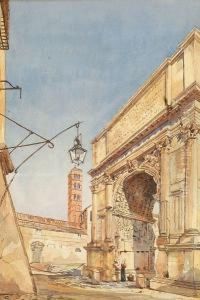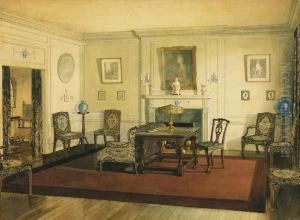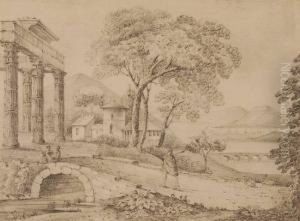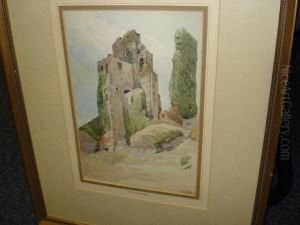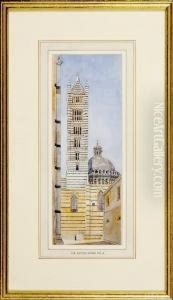Aston Webb Paintings
Aston Webb was a prominent British architect, born in London on May 22, 1849, to a successful family of builders. He was educated at the City of London School and articled to the architect firm of Banks and Barry, where he gained extensive experience. After completing his training, he established his own practice and quickly became a significant figure in the field of architecture.
Webb's architectural style was predominantly influenced by the Beaux-Arts movement and characterized by its grandeur and classical details. His career spanned the latter part of the Victorian era through the Edwardian period, and he was responsible for designing several notable buildings across the United Kingdom.
Among Webb's most famous works is the redevelopment of the Mall in London leading to Buckingham Palace, which he undertook in partnership with his longtime collaborator, Ingress Bell. Together they also designed the Victoria and Albert Museum's main facade, the Cromwell Road front, which remains an iconic piece of London's architectural heritage. Another significant project of Webb's was the principal facade of Buckingham Palace, which he redesigned in 1913 to create the well-known public face of the palace that we see today.
Webb's contributions to architecture were recognized with several honors during his lifetime. He served as the President of the Royal Institute of British Architects from 1902 to 1904 and was later knighted in 1904. In 1905, he was awarded the Royal Gold Medal for architecture.
Aston Webb's legacy continued beyond his designs. He was a professor of architecture at the Royal Academy and influenced the architectural education of many students. His work reflects the imperial confidence of Britain at the turn of the 20th century, and his buildings remain a testament to his skill and vision.
Aston Webb died on August 21, 1930, leaving behind a rich portfolio of architectural works that have been admired and studied by generations. His contributions to the architectural landscape of Britain, particularly in London, have cemented his place as one of the leading architects of his time.
